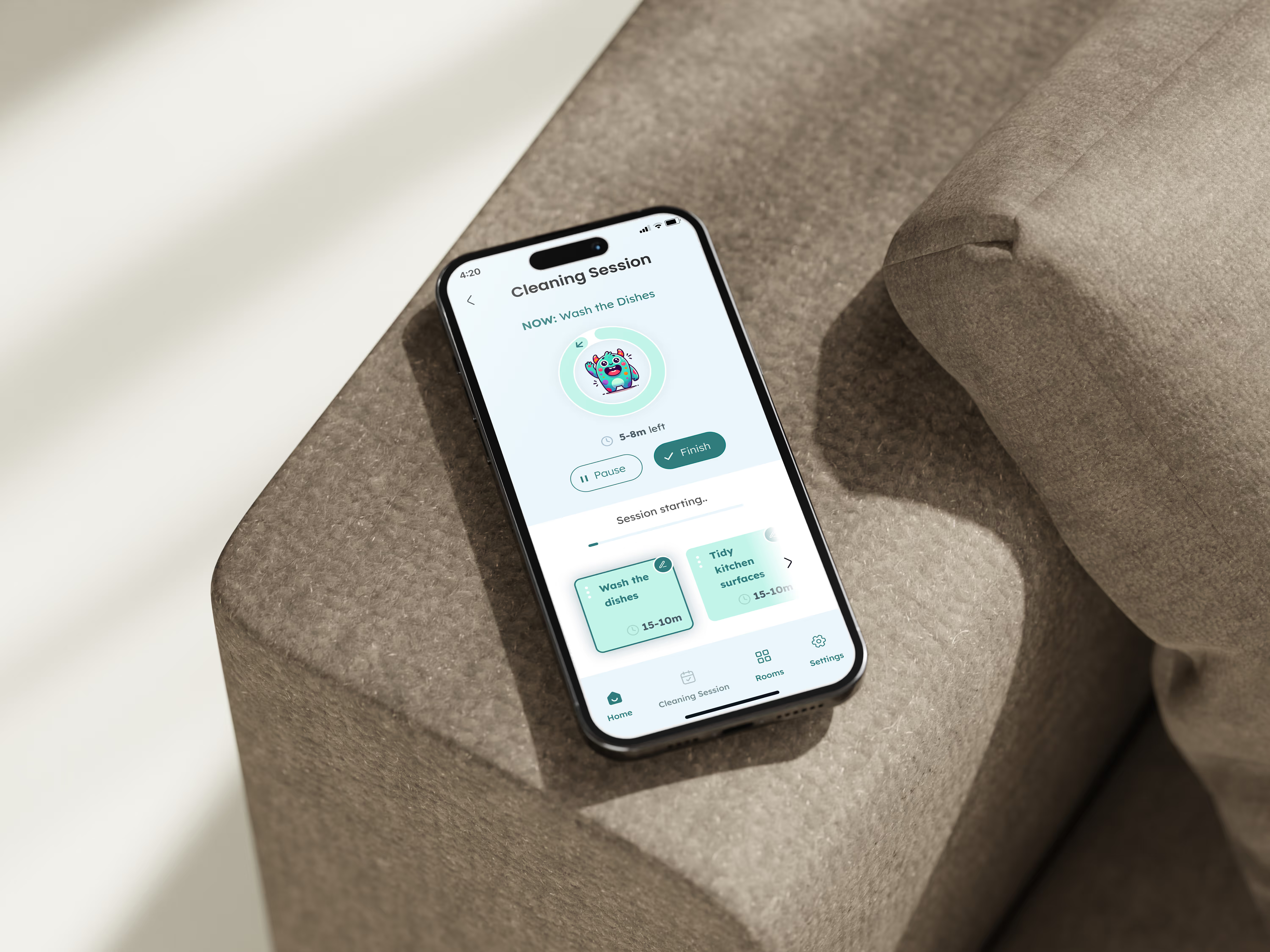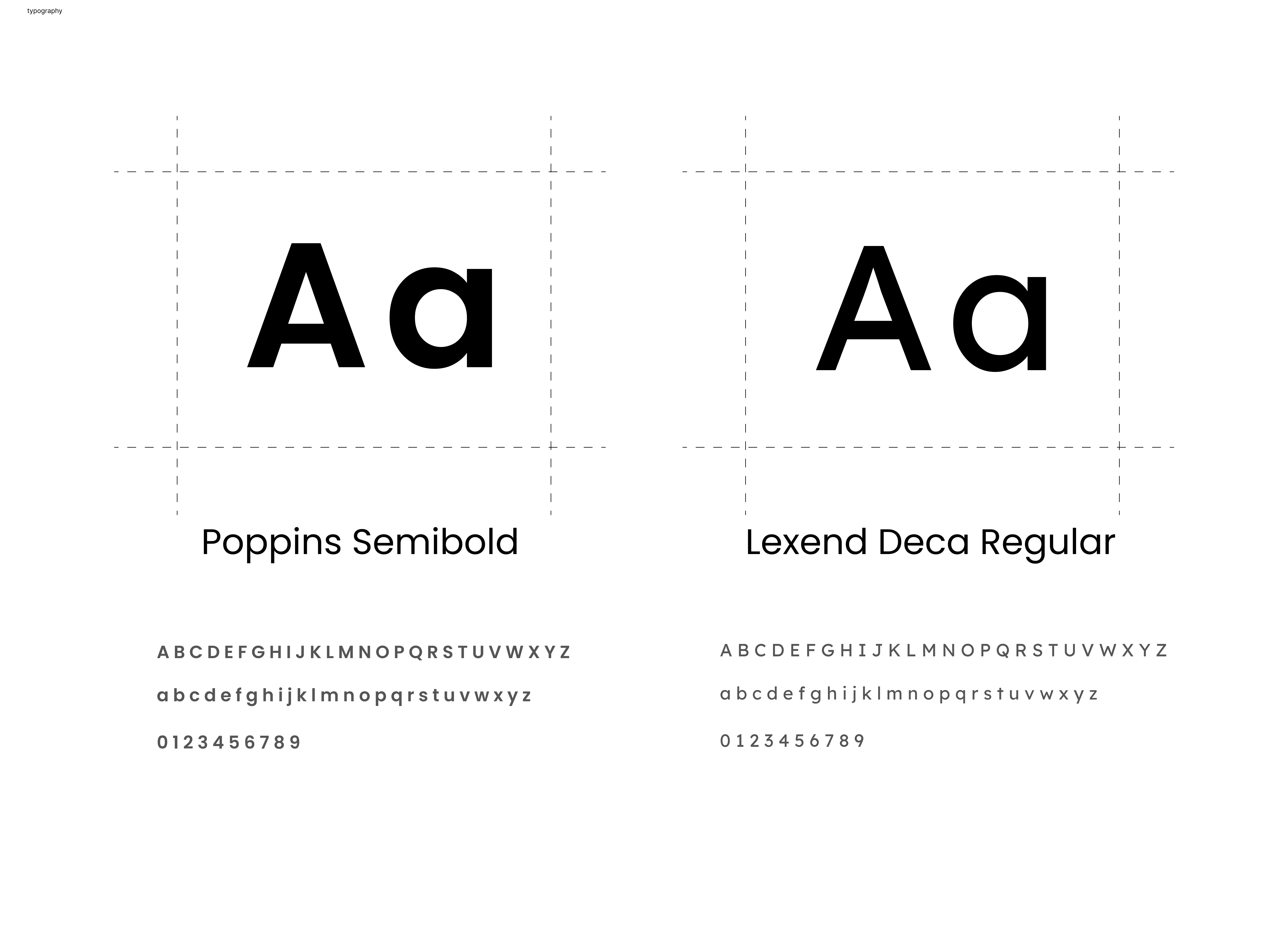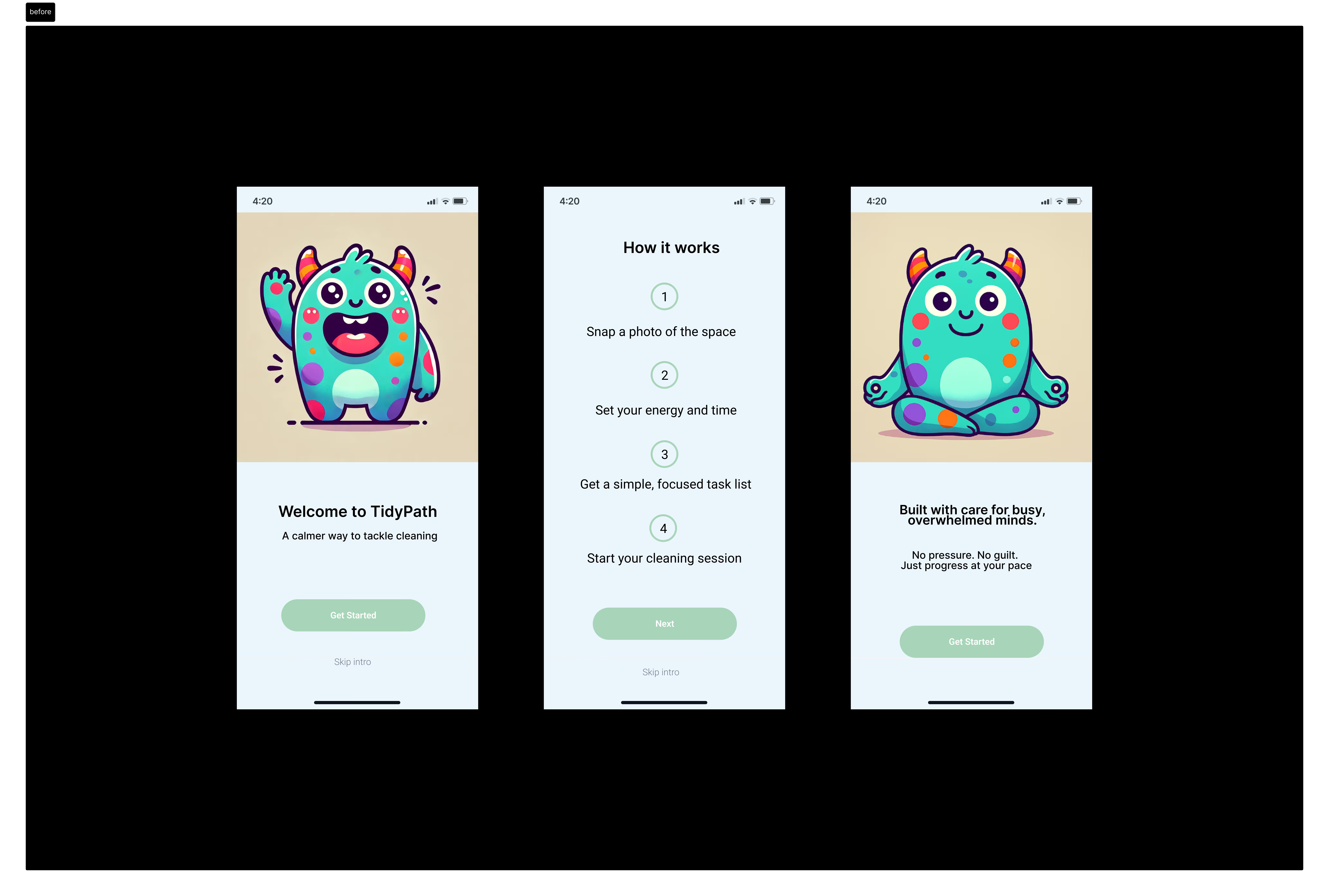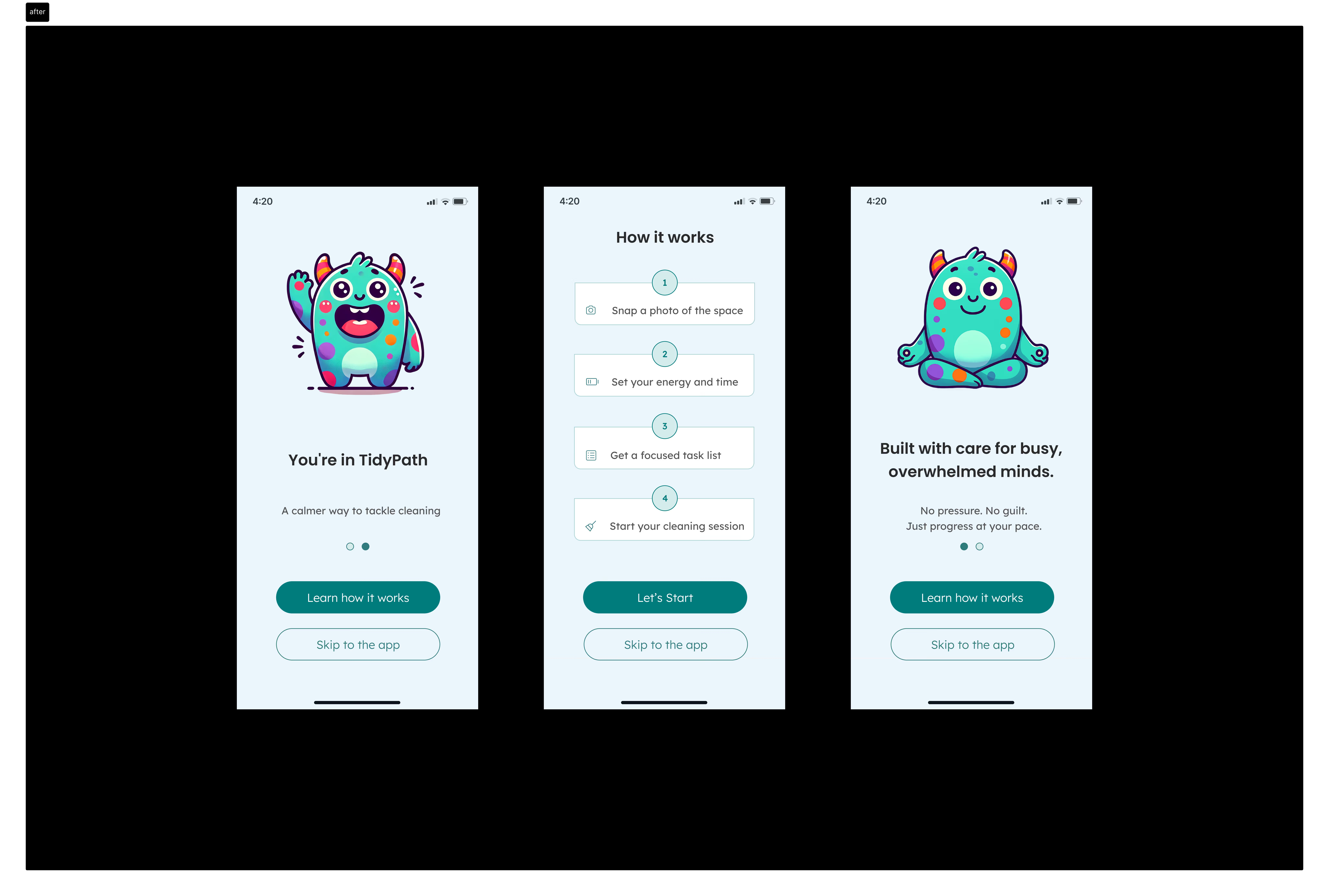
Vicky Gourgouri

Finding calm in the chaos with TidyPath’s ADHD-friendly cleaning companion

TidyPath is a mobile app designed to support users with ADHD and executive dysfunction in managing home cleaning tasks at a gentle, self-paced rhythm.
Stage
MVP
Role
🔹 Design Review
🔹 Branding suggestions
(part of the review)
🔹 Design Suggestions (part
of the review)
Industry
🔹 Productivity and Task Management
🔹 Health and Well-being
🔹 Accessibility and Neuroinclusive Technology
Suggested Typography
Poppins offers clean, geometric shapes that provide strong visual hierarchy and clarity for headlines, while Lexend Deca is specifically designed to reduce visual crowding and improve reading ease, making it ideal for neurodivergent users, especially those with ADHD or dyslexia.

Colors communicate task safety instead of urgency. We avoid red for emotional overload, using coral and yellow instead, while teal acts as a consistent anchor throughout the interface.

User Research
Key Challenges
- 🔹 Balancing Complexity with Simplicity
- 🔹 Clarifying Task Impact Visually Maintaining CTA Visibility Without Clutter
- 🔹 Emotional Tone
- 🔹 Consistency Across Screens
Research
Although this was not a formal UX research role, my review was grounded in evidence-based design practices for neurodivergent users. I referenced behavioral patterns common among ADHD users (including cognitive fatigue, choice paralysis, and task initiation friction) as well as WCAG accessibility standards for visual and interactive elements. Design critiques were backed by inclusive UX heuristics and accessibility best practices, ensuring every suggestion supported clarity, calmness, and user agency.
Onboarding Flow
Before
- 🔸 Beige background section created visual fragmentation.
- 🔸 Generic CTA: “Get Started” lacked emotional warmth or clarity.
- 🔸 Visual hierarchy was centered around the mascot, not the user’s journey.
After
- 🔹 Unified Calm Teal & Warm White background supports consistency and clarity.
- 🔹 Clear header: “You're in TidyPath”. Friendly, informal, and welcoming.
- 🔹 CTA changed to “Learn how it works,” supporting a guided experience.
- 🔹 Added pagination dots for clear onboarding progression.


After
Check-in Flow
Before
- 🔸 Harsh beige tones, absence of structural rythm.
- 🔸 No consistency, emotionally neutral and no indication of what's next or why it matters.
- 🔸 Lack of emotional framing in CTAs with minimal visual cueing.
- 🔸 Repetitive CTAs
- 🔸 Too much effort on using gentle copy can get intimidating.
After
- 🔹 Unified colors for emotional consistency, engaging title, brand value, better hierarhy and focused.
- 🔹 Better visual cueing and focused tasks with clear on intentions CTAs.
- 🔹 Offers structure, scannability, and predictability
- 🔹 Emotional validation.
.avif)
.avif)
After
Choosing Your Cleaning Path
Before
- 🔸 No emotional context shown with selected energy level.
- 🔸 Pills were visually uniform, with weak contrast.
- 🔸 Encouraging text (“You’ve got this!”) could feel performative or pressure-inducing.
- 🔸 Dense layout with both “Try this” and “Generated Tasks” in stacked blocks.
- 🔸 “Swap it” microcopy unclear.
After
- 🔹 Energy status and emojis reinforce emotional check-in.
- 🔹 Clear visual feedback with a highlighted selected button.
- 🔹 CTA is simplified.
- 🔹 “Skip to task list” CTA allows for impatience or urgency without friction.
- 🔹 Clear sectioning.
- 🔹 Priority shown through color coding.
.avif)
.avif)
After
Guided Cleaning Session
Before
- 🔸 Lacked a clear visual distinction between task durations and importance.
- 🔸 No contextual color indicators.
- 🔸 Tasks were shown as equal-priority and didn’t acknowledge the user’s energy or time budget.
- 🔸 CTA positioning wasn't optimal for thumb reach.
- 🔸 Pause/Finish buttons lacked hierarchy and contrast.
After
- 🔹 Color-coded task backgrounds based on “safe to add,” “getting close,” and “overload”.
- 🔹 Small edit icons added for future customization without introducing clutter.
- 🔹 Clear “NOW” task title.
- 🔹 Compact progress arc / balanced layout.
- 🔹 Human-centric time ranges (5–8 mins).
- 🔹 Larger, reachable Pause and Finish buttons, with icon clarity.
.avif)
.avif)
After
This collaboration was a thoughtful balance of accessibility, emotional support, and design clarity. By focusing on microinteractions and flow adjustments tailored for ADHD users, we transformed the app into a calmer, more empowering experience, one that celebrates tiny wins and progress at your own pace.
Client Love
★ ★ ★ ★ ★
It was really great working with Vasiliki. Her work exceeded my expectations!
Ashley-Gail Wright

Founder & CEO

